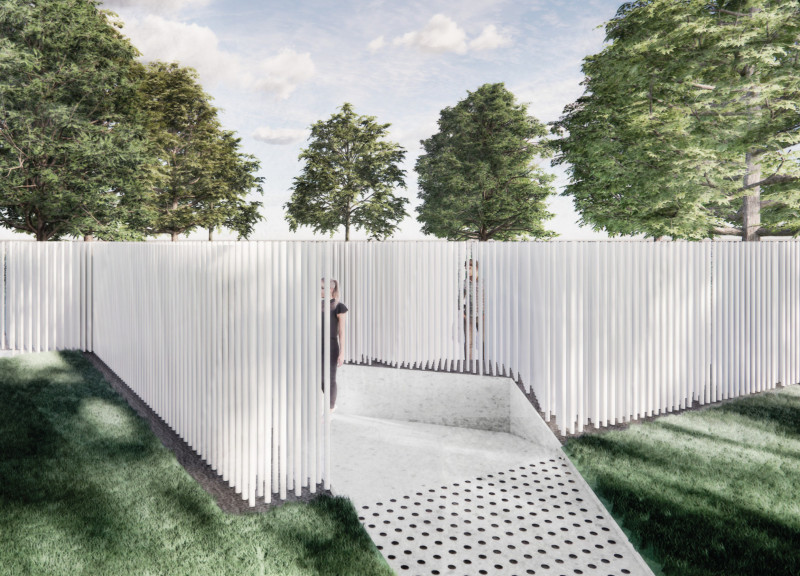5 key facts about this project
The COLLECTIVE PROCESSION interprets the human tragedy of genocide and serves as a memorial and space for reflection. Located in a carefully designed landscape, it aims to provide visitors with an immersive experience that conveys the gravity of historical events tied to the loss of life. By engaging the audience in a physical and emotional journey, the design seeks to illuminate the scale of such tragedies and their impact on humanity.
Conceptual Framework
The core of the design features 17,800 acrylic rods, each representing one life lost, totaling 17,800,000. These rods are arranged methodically to correspond with key genocides, establishing a chronological narrative that allows viewers to grasp the enormity of these events. The layout guides visitors along a dedicated path, fostering a sense of awareness and prompting contemplation about the past.
Material Application
Clear acrylic is used for the rods, promoting a sense of uniformity and equality among those commemorated. Each rod includes a light source at its base, which enables it to light up at night. This illumination brings the memorial to life after sunset, creating a shifting atmosphere that invites visitors to engage with the space under different conditions throughout the day.
Spatial Arrangement
The design incorporates a feature of inverse subtraction in the hardscape, symbolizing the many lives lost that remain unknown or unaccounted for. The paths within the memorial lead to recessed areas in the landscape, providing quiet spots for reflection. These spaces encourage visitors to pause and think about the historical significance of what they are experiencing.
Interaction and Experience
As people walk through the installation, they encounter a dynamic play between light and form. The illuminated rods glow against the darkness of night, serving as reminders of the lives memorialized. This interaction enhances the emotional connection to the space, allowing individuals to engage with the profound themes of collective memory and human suffering.























































